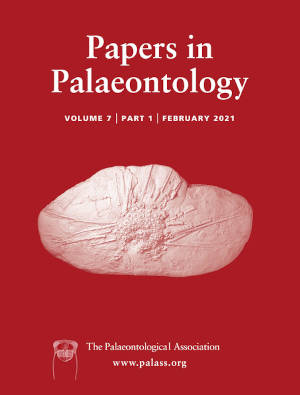Reg. Charity No. 1168330

Bovid material from Xishuigou, Tabenbuluk area, Gansu Province, China, is described here. The type material of ‘Eotragus’ halamagaiensis from the Halamagai Formation, Junggar Basin, Xinjiang Uygur Autonomous Region, China is reviewed as well. Both should be attributed to Turcocerus halamagaiensis comb. nov. The short and almost straight horn cores with concave anterior margins and convex posterior margins are similar to the morphology of the genus Eotragus. However, the slight homonymous torsion (visible along the course of the anterior rib) and well-developed posterior and posterolateral grooves on the horn cores, as well as a weaker inclination than in Eotragus, indicate a closer affiliation to the genus Turcocerus. The short lower cheek teeth with a considerably shortened premolar row further suggest the assignment of the material from Xishuigou to Turcocerus. Thus, there is no reliable representative of Eotragus in China. The record of Turcocerus from Xishuigou is dated to the late Early Miocene and might be the oldest known, suggesting that the genus Turcocerus could have originated in China. The biostratigraphical position of Turcocerus also demonstrates that the dispersal events from China to Turkey and from China to Mongolia may have taken place in the late Shanwangian (Orleanian) and the late Tunggurian (Astaracian), respectively.